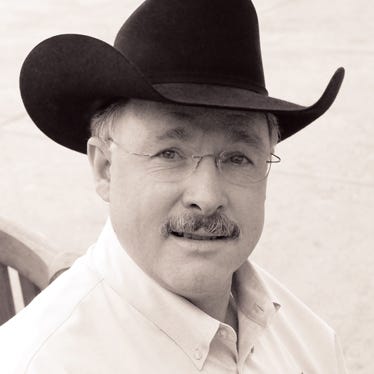Checkup On The National Beef Checkoff
Imagine receiving the same price for your calves this fall as in 1985, but purchasing inputs at today's prices. Imagine you had fewer calves to market, too. That's what the nation's beef checkoff is facing. When the checkoff was established as part of the 1985 farm bill it became mandatory in 1988 the July 1 cattle inventory was 116 million head. On July 1, 2009, the inventory was 101.8 million head.
January 1, 2010

Imagine receiving the same price for your calves this fall as in 1985, but purchasing inputs at today's prices. Imagine you had fewer calves to market, too. That's what the nation's beef checkoff is facing.
When the checkoff was established as part of the 1985 farm bill — it became mandatory in 1988 — the July 1 cattle inventory was 116 million head. On July 1, 2009, the inventory was 101.8 million head.
For the Cattlemen's Beef Board (CBB) — the legal entity authorized by Congress to administer the national beef checkoff's 50¢/head — that meant receiving $47 million in checkoff dollars in 1989; $42 million in 2009.
Keep in mind state beef councils keep 50¢ of every checkoff dollar collected.
CBB officials say to achieve equivalent buying power as compared to 1986 the checkoff assessment would need to be about $2.40/head/transaction, rather than $1.
Next, consider how many more and diverse issues there are today. In 1988, few had heard of a carbon footprint. Few could conceive how necessary beef exports would become to the health of the industry. No one dared dream that society would blindly accept the fictitious accusations lobbied at the industry from a growing cadre of wealthy activist groups.
A shrinking war chest
Tom Ramey, CBB CEO, says building a funding level on par with what the checkoff program began with, relative to the needs of today, you're really talking about needing $3-$4/head rather than $1.
“I don't believe this checkoff program in its current form can last another six years,” says Tom Jones, an Arkansas cattle producer and CBB secretary/treasurer.
That's not alarmist rhetoric. That's cowboy common sense considering dwindling cow numbers and increasing costs and then wondering at what point does the need run so far ahead of available dollars that you're trying to fight a forest fire with a water pistol.
State beef councils are embroiled in the same dilemma with the other half of the checkoff dollar, trying to do more with less.
That's why increasing the checkoff to $2 was one of nine recommendations CBB made to the USDA Secretary earlier this year (see www.mybeefcheckoff.com). CBB didn't recommend a larger increase, figuring $2 was the most producers might accept given the economic environment.
Members of the National Cattlemen's Beef Association (NCBA) passed a resolution last January in favor of an increase.
“We all know the industry is in a defensive position and needs more money to fight back,” says Burton Eller, NCBA senior vice president of public affairs and advocacy development. “As an industry we've done an awful lot of good, but we're being attacked from all sides and some of our thrust will have to change.”
Battles in and out
Most any change to the checkoff requires an industry-wide referendum, like the one that established it. That means there are plenty of politics to resolve within the industry and outside of it.
Outside, there is government, always a dicey, unpredictable force anytime you risk revisiting legislation that you want, but maybe with some changes.
Inside the industry is a bevy of organizations representing beef producers nationally, from the Livestock Marketing Association to the American Farm Bureau Federation.
Argue if you want, but NCBA remains the chief industry representative, and that complicates the process further.
NCBA's Federation of State Beef Councils (FSBC) is the primary contractor for CBB. It's not nepotism. Fact is, a number of organizations are eligible to contract with CBB but few choose to take on the strenuous legal and auditing requirements that go with it.
Remember that NCBA was formed via a merger in 1996 that included the National Cattlemen's Association and the Beef Industry Council of the National Livestock and Meat Board. In simple terms, NCBA has policy-making and lobbying sides, and at the same time, contracts to carry out checkoff programs.
Understandably, this structure and relationship mean that many producers see NCBA and the checkoff as one and the same.
In fact, in its approved procedural recommendations to the USDA Secretary, CBB explains, “The executive committee found producers' perceptions of insufficient separation between the FSBC and NCBA's Policy Division to be of serious concern, having the potential to threaten the future of the beef checkoff, and forwarded these concerns to NCBA's Governance Task Force and the Federation for their urgent consideration.”
Eller stresses, “We have more reason that anyone to maintain a strict political, financial and accountability firewall between the policy and checkoff work done at NCBA.” He adds that multiple audits have verified the firewall.
Streamlined structure
NCBA will present a streamlined governance structure for member consideration at its annual meeting later this month, which may or may not address that issue.
But, it's one of those sticky issues that likely must be hashed out before the industry can achieve consensus on moving forward with a fee increase or other changes to fight for in a new checkoff referendum.
For its part, again by law, CBB can't lobby for or against a fee increase or other recommendations. All it can do is make a recommendation. So, it comes down to cattle producers instructing the organizations representing them.
CBB sought input from 15 of these organizations in compiling its recommendations. Representatives met to assess the level of agreement. As you might imagine, there are differences of opinion. But, Jones, the CBB secretary/treasurer, says he walked away from the meeting feeling there was collective agreement that the industry needs to increase the checkoff fee.
There's no telling, though, whether the collective will exist to tackle the lengthy, arduous process of another referendum. Such a process could take two years, Ramey says.
By any measure, the beef checkoff has returned more than it has cost, about $5.50 for every dollar invested, according to the latest study.
“It's time to recognize that while there's a cost for doing something, there's also a cost associated with doing nothing,” Jones says.
About the Author(s)
You May Also Like




.png?width=300&auto=webp&quality=80&disable=upscale)
